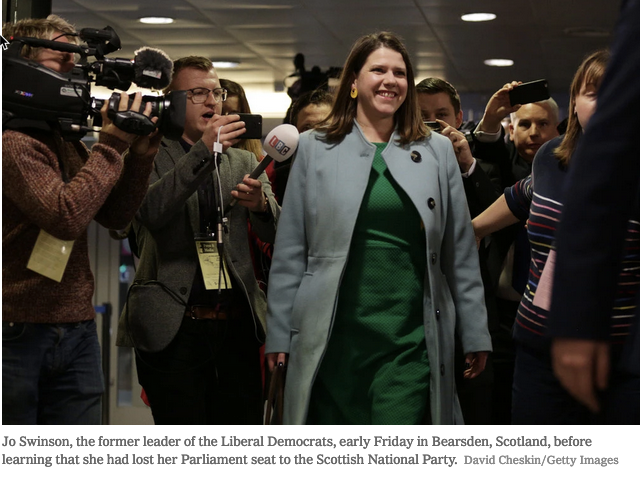LONDON — The answer to Brexit, the Conservative Party’s election victory and everything in British politics is (with apologies to Douglas Adams) 336,038.
That number is what you get when you divide the 3,696,423 total votes cast nationally for the Liberal Democrats party in last week’s election by the 11 seats the party actually won. By contrast, Prime Minister Boris Johnson led his Conservative Party to victory via a far more economical average of 38,265 votes for each of its 365 seats — a roughly tenfold difference in the parties’ ability to translate votes cast into seats won.
The Conservatives’ triumph and the Liberal Democrats’ disaster were both the result, in large part, of a factor that is rarely discussed but crucial for understanding the country’s political chaos: Britain, like the United States, operates a “first past the post” electoral system, in which parliamentary seats are awarded to the candidate who wins the most votes in each individual race, rather than by proportion of the total national vote.
Brexit, which has polarized Britain around a new political divide since the 2016 referendum in which the country narrowly voted to leave the European Union, has thrown into sharp relief the ways that first-past-the-post systems can skew political outcomes.




